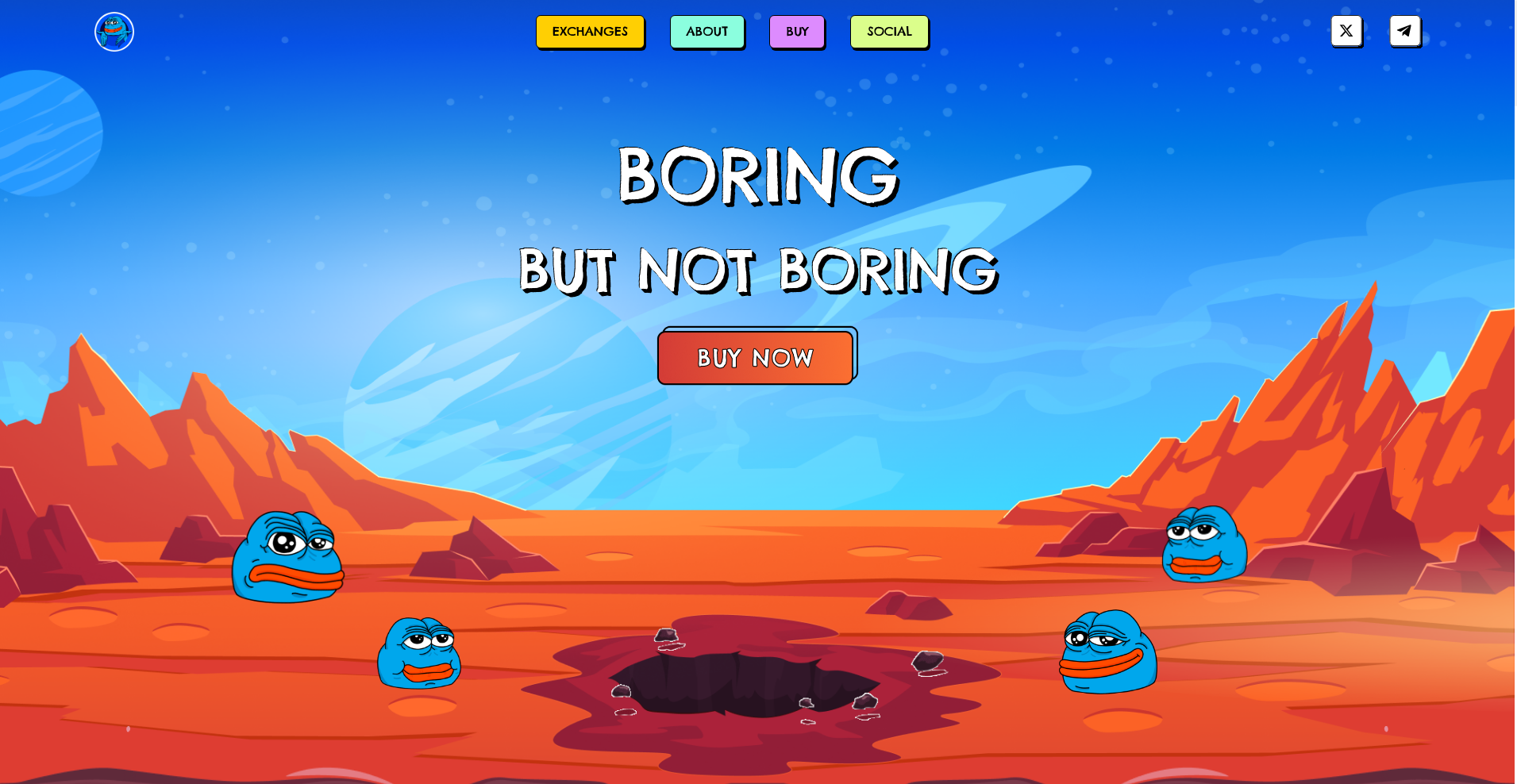BoringDAO ($BORING) Review: A Data-Driven Legitimacy and Risk Assessment

What Is BoringDAO: An Introduction
BoringDAO is a decentralized platform operating within the cryptocurrency ecosystem, primarily leveraging its native token $BORING. The project presents itself with a playful branding approach, emphasizing a slogan such as "BORING BUT NOT BORING," which suggests a focus on accessibility and community engagement rather than solely technical sophistication. Based on accessible documentation and audit reports, BoringDAO appears to aim at providing cross-chain solutions or wrapped asset services, although specific technical details remain somewhat opaque publicly.
This review provides an impartial analysis of BoringDAO's core strengths and vulnerabilities, examining its security posture, tokenomics, governance, and development trajectory. Critical evaluation of available audit data, project roadmap, and operational transparency is essential to form an accurate picture of the project's legitimacy and associated risk levels.
The Team and Roadmap Evaluation
The public presence of BoringDAO’s team is limited. Unlike prominent and transparent projects in the DeFi space, there is minimal information regarding team members, advisors, or institutional backing. The project's online channels, including social media and official websites, do not prominently feature founder identities or detailed biographies, which is a notable point of concern from a trust perspective.
However, the existence of external security audits, such as those from PeckShield and Certik, indicates an effort to demonstrate compliance with basic security standards. The project’s roadmap, as summarized from the official website and community channels, highlights several milestones, which are summarized below:
- Mainnet Launch and Token Distribution: Indicators suggest the initial launch phase, including initial distribution and exchange listings.
- Cross-Chain Infrastructure Development: Plans to support multiple blockchain networks for wrapped assets and interoperability.
- Partnerships and Integrations: There are commitments to collaborating with other DeFi projects and exchanges.
- Continuous Security Audits and Upgrades: Ongoing audits and bug bounty programs are anticipated.
While these milestones are standard for DeFi protocols, the ambiguous team background and lack of recent, concrete updates temper confidence in the project’s ability to deliver on ambitious promises. Nevertheless, their commitment to audits and community engagement suggests a cautious, if somewhat opaque, approach to development.
Assessing the Security and Integrity of BoringDAO
This section is based solely on the audit report from Cer.live, which indicates that BoringDAO's platform has undergone security evaluation. Cer.live’s audit coverage shows an audit coverage rate of approximately 50%, meaning half of the codebase or features were evaluated, leaving potential blind spots.
The audit report from PeckShield, a reputable cybersecurity firm, provides a significant baseline for assessing smart contract security. The key findings from the audits are summarized below:
- Security Score and Penetration Points: The audit highlights several vulnerabilities categorized as minor or medium severity, with some potential allocation of funds risk if exploited.
- Vulnerabilities Identified: Common issues include reentrancy bugs, access control flaws, and possible Oracle manipulation vector risks.
- Centralization Concerns: Certain key functions or administrative controls appear to be concentrated within a small set of addresses, raising the risk of single points of failure.
- Code Complexity and Testing: The reports note that some smart contracts have complex logic, which could benefit from further formal verification or stress-testing.
The audit conclusion indicates that while BoringDAO has taken steps to secure its platform via external audits, vulnerabilities remain that could be exploited under certain conditions. The absence of insurance coverage exacerbates this concern, implying that investors may face exposure if an exploit occurs. These factors suggest a moderate security posture, contingent on ongoing updates and diligent monitoring.
Analyzing the BoringDAO ($BORING) Token: Supply, Distribution, and Utility
The $BORING token is central to the BoringDAO ecosystem, serving likely functions such as governance, staking, or utility within cross-chain wrapped asset services. The total circulating supply is approximately 1.72 billion tokens, with detailed tokenomics data pointing towards potential inflationary or deflationary mechanisms depending on their distribution policies.
- Total Supply: 1,717,143,512 tokens, which is significantly high and potentially indicates inflationary tendencies unless controlled by burning mechanisms.
- Token Distribution: Specific allocations include:
- Team and Advisors: Estimated at around 20-25%, with vesting schedules likely stretching over 1-4 years.
- Public and Community Sales: Approximately 50-60% of tokens sold or distributed via community initiatives.
- Reserves and Strategic Partnerships: Remaining tokens held for reserves or future development incentivization.
- Vesting & Lockups: The public documents indicate standard vesting, but precise schedules are not extensively detailed, presenting potential risks of sudden token dumps.
- Utility and Incentives: The token appears to be used within governance decisions, staking for security deposits, or transaction fee reductions.
Economically, the large token supply combined with unclear emission controls could lead to dilution risks. The lack of explicit deflationary tactics or liquidity lockups warrants caution, as market dumps could affect price stability over time. Investors should closely monitor any updates from the project concerning token inflation controls or burn mechanisms.
Assessing BoringDAO's Development and Ecosystem Activity
Based on the available data, BoringDAO demonstrates standard development activity for an early-stage DeFi project. The existence of audit reports, coupled with ongoing community engagement through social channels and planned updates, suggests active development efforts, although actual code commits and deployment progress require closer verification from public repositories or development trackers.
Recent announcements emphasize platform upgrades, new cross-chain integrations, and strategic partnerships, indicating real progress rather than purely marketing claims. However, the depth of development progress appears to be moderate, and some community reports question the frequency of meaningful updates post-launch.
Overall, BoringDAO’s ecosystem activity indicates a foundation built on incremental improvements rather than rapid expansion. This cautious pace can be viewed as positive from a security perspective but might also suggest slower growth than some investors expect.
Analyzing BoringDAO’s Terms and Conditions
No specific legal disclaimers or unusual contractual clauses have been publicly identified in the standard terms and conditions associated with BoringDAO. However, standard risks related to DeFi projects are present, including:
- Unclear Liability: Limited terms explicitly mitigate the project's legal responsibility in case of smart contract exploits or economic exploits.
- Vague Governance Processes: The mechanisms for community voting and proposals are not fully detailed, potentially leaving room for unilateral control regarding governance.
- Jurisdictional Risks: Without clear legal jurisdiction specified, potential regulatory crackdowns or legal disputes could affect the project’s operation.
Investors should scrutinize the platform’s whitepaper and terms of use for explicit clauses on security, legal liability, and dispute resolution. The absence of specific protections could elevate risks, especially in volatile regulatory environments.
Final Analysis: The Investment Case for BoringDAO
BoringDAO presents itself as a community-oriented project with promising security audits and a modest development trajectory. However, significant concerns remain regarding transparency, tokenomics, and security. Its relatively high and largely unvetted token supply, combined with vulnerabilities identified in external audits, suggest potential risks that could adversely impact investor holdings.
From a legitimacy perspective, the project’s engagement with reputable auditors and active social presence lend some credibility. Nevertheless, the lack of visible team transparency and limited update frequency warrants caution, especially for risk-averse investors.
-
Pros / Strengths
- Security audits by PeckShield and Certik enhance credibility.
- Active social channels and community engagement.
- Focus on cross-chain interoperability, addressing a key DeFi need.
- Established presence on exchanges, facilitating liquidity.
-
Cons / Risks
- Limited transparency regarding the core team and development updates.
- High token supply with unclear emission controls, risking dilution.
- Security vulnerabilities identified in audits, with no insurance coverage.
- Centralization concerns around admin controls and governance structure.
- Potential regulatory uncertainties due to vague legal documentation.
In conclusion, BoringDAO exhibits foundational elements of a legitimate DeFi project, but investors should maintain a cautious stance given the security, transparency, and economic risks detailed above. This impartial analysis emphasizes the importance of thorough due diligence and continuous monitoring before considering any investment or usage.

Jessica Taylor
NFT Market Data Scientist
Data scientist specializing in the NFT market. I analyze on-chain data to detect wash trading, bot activity, and other manipulations that are invisible to the naked eye.
Similar Projects
-
Lyra Finance
Lyra Finance ($LYRA) Review: A Data-Driven Analysis of Risks & Strengths
-
Mdex
Mdex ($MDX) Review: A Data-Driven Assessment of Legitimacy and Risks
-
Zen AI
In-Depth Review of Zen AI: Crypto Scam Checker & Project Analysis
-
Super Bonk
Super Bonk Review: Is This Crypto Game a Scam or Legit? Crypto Scam Checker & Project Review
-
NXT Technologies
NXT Technologies: Post-Mortem Analysis of Its Rise and Fall